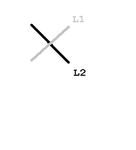neazoi
Advanced Member level 6
I have designed a LPF that has two sections. One used a 100nH inductor and the other a 200nH one.
I only have 100nH molded chokes. Can I connect two of these in series to form the 200nH inductor?
Is there any optimum way I can physically align them (axially, T-form, one next to the other in parallel). I am worrying about weird feedback things, since they are axial.
just a note, these molded chokes have ceramic cores, non ferrite.
I only have 100nH molded chokes. Can I connect two of these in series to form the 200nH inductor?
Is there any optimum way I can physically align them (axially, T-form, one next to the other in parallel). I am worrying about weird feedback things, since they are axial.
just a note, these molded chokes have ceramic cores, non ferrite.
